Compression socks have many fantastic benefits, such as improving tired feet and blood flow and treating various foot and leg conditions. But you only reap these benefits when you have the compression socks. Only some compression socks are precisely the same, and determining the size of your compression sock is also vital for your comfort and health.
Before purchasing your first or fifth pair of compression socks, let us help you find the right size and sock!
How to Find Your Size
First Things First: Refer to the Experts
Remember that one of the best ways to determine what size compression sock you need is to refer to your manufacturer's website. They'll be able to tell you which of their socks fits you best, especially since one brand's "small" could be another's "medium." There is no "one size fits all" in the world of compression! Look for a size guide on the brand's website in the "About Us" section or the product description.
Another expert to ask is your doctor. Suppose you have a certain medical condition that requires compression socks. In that case, your physician may take your measurements in the office to determine the best compression sock brand and size for you, such as compression socks for neuropathy. Even if you don't require a prescription, you can ask your doctor for insight and recommendations to try and choose the best compression sock.
Take Your Measurements
When you buy regular socks, you select your size based on your shoe size. For compression socks, you also need to measure your calf circumference. This will tell you whether you need standard-width or extra-wide calf compression socks.
Remember, to get the most accurate measurements, you should measure yourself first thing in the morning before you've had anything to eat or drink.
Step 1: If you'd like to double-check your foot size, get a piece of paper more significant than your foot, a pencil, and a ruler. With your heel against a wall, trace an outline of each foot, and then use a ruler to measure the length from heel to toe and width from the widest part of your foot to another. Write down those measurements and then compare them to a foot-size chart!
Step 2: You'll need a tape measure or a long string beside a yardstick for reference. If you're using a tape measure, wrap it around the widest part of your calf with the inches facing outward so that you (or someone helping you) can see the numbers. If you're using a piece of string, make sure you can mark the circumference of your calf accurately, and then lay it out beside a yardstick to determine how many inches long it is. Be sure to record that number.
Step 3: Please take a second to measure the circumference of your ankle while you're at it. Only some compression sock brands include ankles in their size guides. Still, it's better to have more information than you need than not having enough. To accurately measure the ankle, measure the circumference of the smallest leg part just above the ankle bone.
Step 4: Another part of your leg you should measure is the height from the flat of your foot to the bend of your knee. To do so, sit in a chair and measure from the floor to the very top of your calf, where the bend behind the knee starts. This will provide you with the length of your calf.
Step 5: Some websites recommend measuring your height as well. If you visit your doctor regularly, you might know this number off the top of your head. Still, if you don't, it's as easy as standing with your feet flat against a wall with proper posture. Either hold a tape measure up to see how many inches tall you are or make a mark on the wall at the top of your head and measure how high the mark is after you step away.
Remember, compression socks are designed with graduated compression, meaning they are tightest at the ankle and gradually reduce pressure up the leg. This design promotes blood flow back to the heart, helping to prevent conditions like DVT (Deep Vein Thrombosis) and reducing swelling. Ensuring a proper fit according to your measurements is crucial for this graduated compression to work effectively.
How Much Compression Do You Need?
To enjoy the benefits of compression socks, they must feel somewhat tight—but not uncomfortably tight. How tight should they feel? How much compression do you need? Which one is best for you?
Important details to note:
- Compression socks should never be so tight as to cause pain or discomfort.
- If you have a peripheral vascular disease that affects your lower extremities, you should not wear compression socks.
- People diagnosed with diabetes should ensure they monitor their feet and legs, especially their toe color, when wearing compression socks, as people with diabetes are prone to nerve damage in their feet and are unaware of serious medical issues or wounds.
Choosing Compression Levels
Keep the following compression levels in mind when trying to determine the amount of pressure that's best for you:
- 15-20 mmHG: Perfect for non-medical use, daily wear, travel, work, and sports. Excellent in improving circulation without feeling too tight.
- 20-30 mmHG: These socks are geared toward sports recovery, medical recovery, and managing severe varicose and spider vein symptoms. They can also be worn daily.
- 30-40 mmHG: This compression level is only recommended for serious medical conditions such as blood clots, severe swelling and edema, severe varicose veins, and surgery recovery.
So how much do you need? The 15-20 mmHG is the sweet spot for those without severe medical conditions who want the extra support, circulation, and benefits of daily compression sock wear. However, suppose you need socks for specific medical issues, such as diabetic socks. In that case, it's crucial to consult with a healthcare professional to determine the appropriate compression level.
It's also essential to be aware of potential side effects. Compression socks that are too tight or worn improperly can cause skin irritation, allergic reactions, and, in severe cases, issues like bacterial infections or soft tissue damage. Continuously monitor for any adverse reactions and consult a doctor if problems arise.
Material Considerations
Compression socks come in various materials, each catering to different needs. Materials like opaque and sheer fabrics offer different levels of fashion and coverage. At the same time, cotton, wool, nylon, and spandex blends provide varying degrees of durability, breathability, and moisture control. Choosing a suitable material is essential for both comfort and effectiveness. For example, those needing moisture control might prefer a nylon-spandex blend, while someone looking for durability might opt for wool.
Variety for Different Uses
Men's and women's compression socks are not one-size-fits-all and vary depending on their intended use. For instance, athletes might prefer knee-high socks for better mobility. At the same time, travelers might need compression socks with cushions for more comprehensive support. Compression socks are also suitable for nurses, who are commonly on their feet for extended periods each day and may benefit from 15-20 mmHg of compression.
Additionally, some people might benefit from pantyhose-style compression socks for full-leg coverage. Understanding the specific needs of your activity or condition will help you select the best type of compression sock.
Usage Guidelines
Once you've found the right compression level and size, it's essential to wear your socks correctly to ensure they are effective. Compression socks should lie flat against your skin without any bunching, and you should avoid folding the tops, as this can restrict blood flow. Depending on your needs and medical advice, you may need to wear them all day, so proper usage is vital to maximizing their benefits.
Athletic Use
Athletes often use compression running socks to aid in faster recovery and comfort during activities. While research on performance improvement is mixed, many runners, cyclists, and other athletes find compression socks helpful in reducing muscle soreness and improving recovery after intense workouts. Compression socks can be a valuable tool for athletes to recover during an activity.
Care & Replacement
Regular care is essential to maintaining the effectiveness and comfort of your compression socks. Wash your compression socks with mild soap after each use and ensure they are scorched before wearing them again. It's also recommended to replace your compression socks every 3 to 6 months, as the elasticity and compression levels can degrade over time, reducing their effectiveness. Consider recycling your old socks or repurposing them around your house.
Try Them On
Last but never least, once you have permission from your doctor and all the necessary measurements, try them on and test them out. If you can go to a compression sock manufacturer or shop in person, that would be fantastic! If browsing online, ensure you get your socks from a reputable company with an excellent return and exchange policy.
Find the Right Size Compression Socks for You Today
Finding the correct sock size for you at Crazy Compression can be frustrating. The question, "What size compression socks do I need?" could go on and on in your head. Moreover, ordering the wrong size socks and being unable to exchange them is incredibly disappointing.
We want your experience with compression socks to be seamless and enjoyable, so we allow and encourage you to refund or exchange compression socks until you find the perfect fit. With many designs and size variations, finding the best pair of socks for you will be a walk in the park. Check out our compression socks and order your favorite pairs today to try them on risk-free!

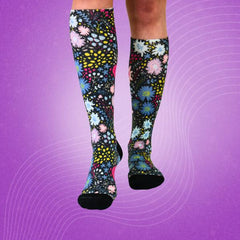
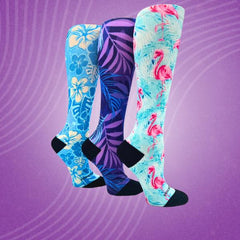
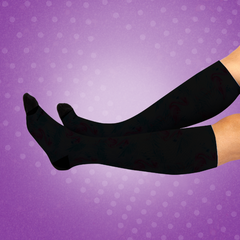

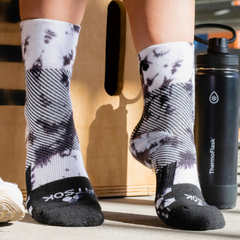
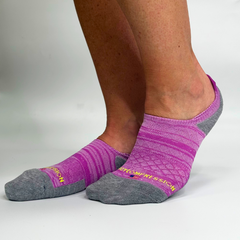

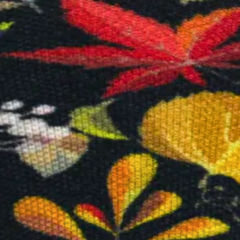







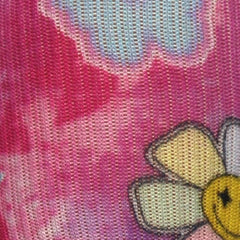
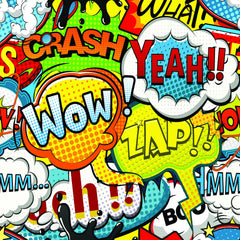


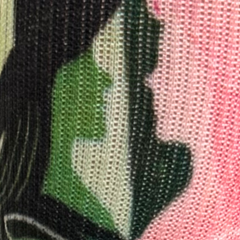
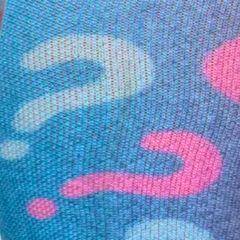

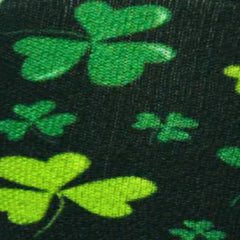
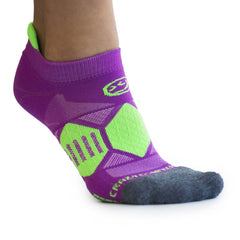

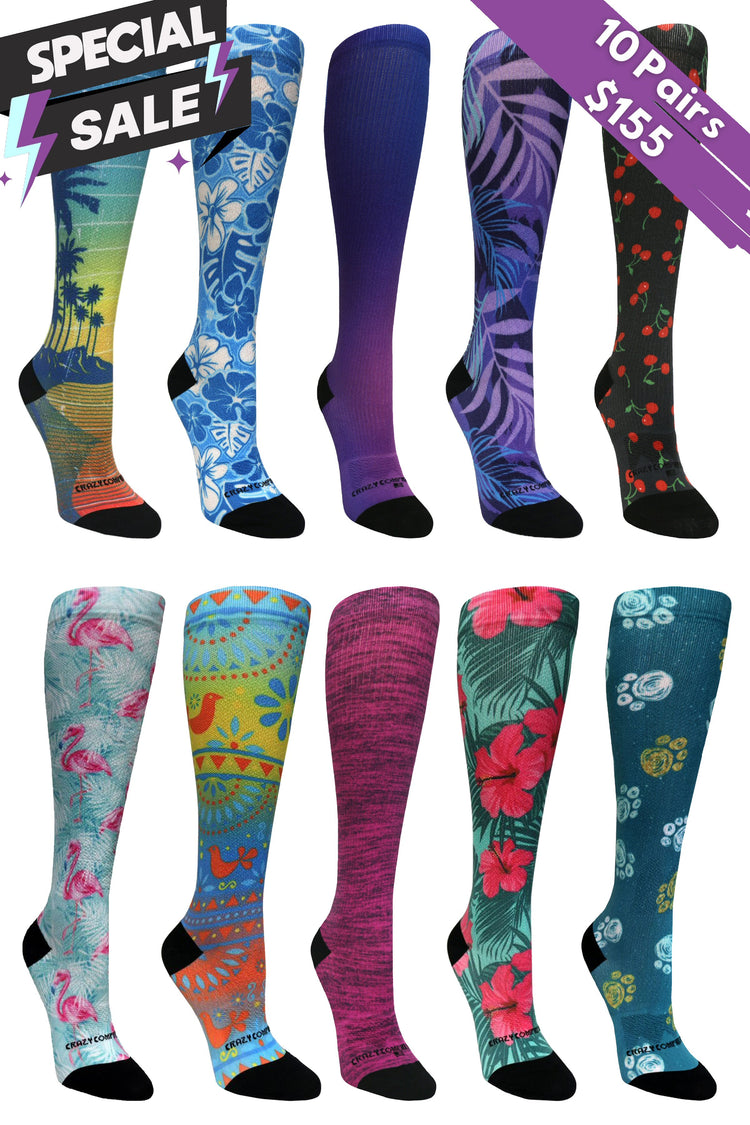



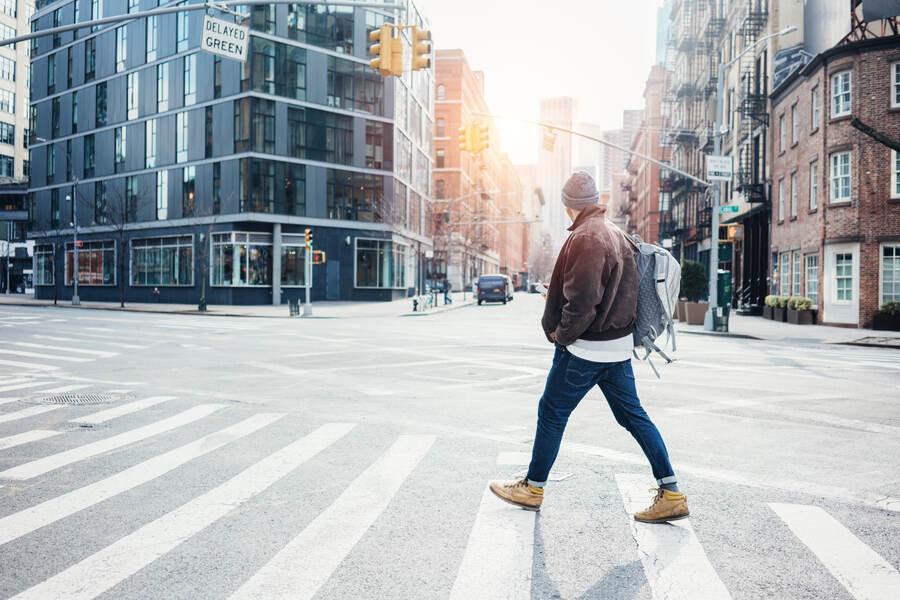

Leave a comment
This site is protected by hCaptcha and the hCaptcha Privacy Policy and Terms of Service apply.